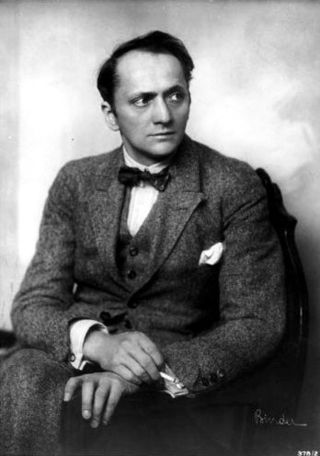
Theodor August Konrad Loos was a German actor.
Paul Victor Ernst Dahlke was a German stage and film actor.

The Man Who Was Sherlock Holmes is a 1937 German mystery comedy film directed by Karl Hartl and starring Hans Albers, Heinz Rühmann and Marieluise Claudius.

I Need You is a 1944 German comedy film directed by Hans Schweikart and starring Marianne Hoppe, Willy Birgel and Paul Dahlke. The film's sets were designed by the art director Hans Sohnle.

Above All Else in the World is a 1941 German drama film directed by Karl Ritter and starring Paul Hartmann, Hannes Stelzer and Fritz Kampers. The title refers to the second line of the German national anthem. It was made as a propaganda film designed to promote Nazi Germany's war aims in the Second World War.

The Deruga Case is a 1938 German crime drama film directed by Fritz Peter Buch and starring Willy Birgel, Geraldine Katt and Dagny Servaes. It is based on the 1917 novel of the same title by Ricarda Huch. It was shot at the Babelsberg Studios in Potsdam. The film's sets were designed by the art directors Wilhelm Depenau and Ludwig Reiber.
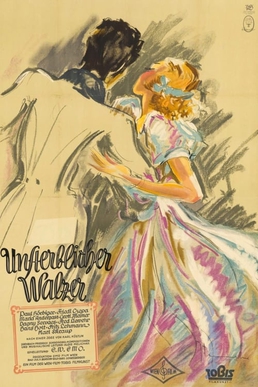
Immortal Waltz is a 1939 historical drama film directed by E. W. Emo and starring Paul Hörbiger, Dagny Servaes, and Maria Andergast.

The Dreamer is a 1936 German historical drama film directed by Carl Froelich and starring Emil Jannings, Hilde Weissner, and Harald Paulsen. It is based on the play of the same name by German playwrights Oskar Jerschke and Arno Holz. The film's art direction was by Franz Schroedter, a leading set designer of the era. It premiered at Berlin's Ufa-Palast am Zoo.

Enemies is a 1940 German drama film directed by Viktor Tourjansky and starring Brigitte Horney, Willy Birgel and Reinhold Lütjohann. The film was a Nazi propaganda work, attacking Poland which Germany had invaded the year before. The film's sets were designed by Herbert Hochreiter, Alfred Metscher and Julius von Borsody.
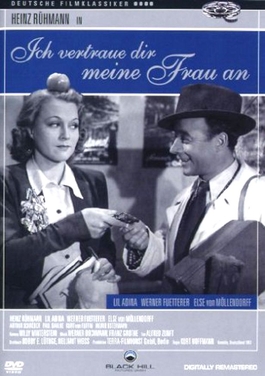
I Entrust My Wife to You is a 1943 German comedy film directed by Kurt Hoffmann and starring Heinz Rühmann, Adina Mandlová, and Werner Fuetterer. It was shot at the Babelsberg Studios in Berlin. The film's sets were designed by the art director Willi Herrmann.

Doctor Crippen or Doctor Crippen on Board is a 1942 German crime film directed by Erich Engels and starring Rudolf Fernau, René Deltgen, and Anja Elkoff.
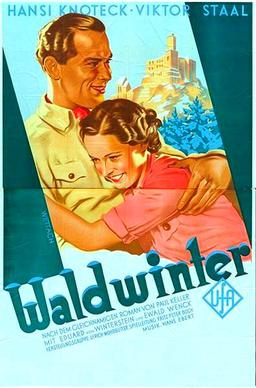
Winter in the Woods is a 1936 German drama film directed by Fritz Peter Buch and starring Viktor Staal, Hansi Knoteck and Hans Zesch-Ballot. It was shot at the Babelsberg Studios of UFA in Berlin. The film's sets were designed by the art director Max Mellin. It was remade in 1956 under the same title.
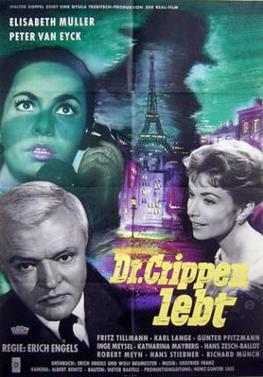
Doctor Crippen Lives is a 1958 West German crime film directed by Erich Engels and starring Elisabeth Müller, Peter van Eyck and Fritz Tillmann. It was made at the Wandsbek Studios of Real Film in Hamburg. The film's sets were designed by the art director Dieter Bartels.
Stresemann is a 1957 West German drama film directed by Alfred Braun and starring Ernst Schroder, Leonard Steckel and Anouk Aimée. It portrays the career of the German Minister for Foreign Affairs Gustav Stresemann in the 1920s.

The Chaplain of San Lorenzo is a 1953 West German drama film directed by Gustav Ucicky and starring Willy Birgel, Dieter Borsche and Gertrud Kückelmann. It was shot at the Bavaria Studios in Munich. The film's sets were designed by the art directors Robert Herlth and Gottfried Will.

House of Life is a 1952 West German drama film directed by Karl Hartl and starring Gustav Fröhlich, Cornell Borchers and Edith Mill. The film's setting is a maternity hospital, portraying the stories of various staff and patients.

The Dark Star is a 1955 West German drama film directed by Hermann Kugelstadt and starring Elfie Fiegert, Ilse Steppat and Viktor Staal.

Border Post 58 is a 1951 West German crime film directed by Harry Hasso and starring Hansi Knoteck, Mady Rahl and Elise Aulinger.

The Eternal Spring is a 1940 German drama film directed by Fritz Kirchhoff and starring Eugen Klöpfer, Bernhard Minetti and Lina Carstens. It is part of the tradition of Heimatfilm.

Three from Variety is a 1954 West German drama film directed by Kurt Neumann and starring Ingrid Andree, Peter Pasetti and Paul Dahlke. It is based on the 1912 novel The Oath of Stephan Huller by Felix Hollaender which has inspired a number of film adaptations.


















